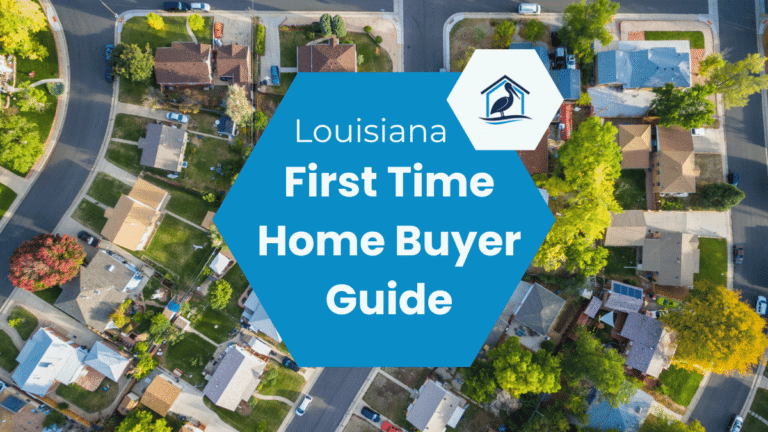What Is An FHA Non Occupant Co-Borrower?
An FHA Non-Occupant Co-Borrower, often referred to simply as a “co-borrower,” is an individual who is not planning to reside in the property being financed with an FHA loan but is equally responsible for repaying the loan.
This arrangement is typically used to help the primary borrower qualify for the loan by including the co-borrower’s income and creditworthiness in the application.
Does FHA Allow Non-Occupant Co-Borrowers?
Yes, the Federal Housing Administration (FHA) does allow for non-occupying co-borrowers to be included in a mortgage application. This means that if you’re looking to purchase a home with an FHA loan but your own financial qualifications are insufficient, you can have a non-occupying co-borrower, such as a family member or close friend, co-sign the loan with you.
Non-occupying co-borrowers are individuals who won’t be residing in the purchased property but are willing to share the financial responsibility for the loan. This can be especially helpful for first-time homebuyers or individuals with limited credit history or income. FHA loans are known for their flexibility and inclusivity, making them accessible to a wide range of borrowers.
However, it’s important to note that there are specific guidelines and requirements that non-occupying co-borrowers must meet to be eligible for an FHA loan.
These guidelines often pertain to their relationship with the primary borrower, income, credit history, and ownership stake in the property. Additionally, the property’s total loan amount must not exceed FHA loan limits, which vary by location.
Utilizing a non-occupying co-borrower can be a viable option for those who may not qualify for an FHA loan on their own, providing an opportunity to achieve homeownership with the support of a co-borrower who meets FHA’s criteria.
Check Your FHA Loan Eligiblity Now
FHA Non-Occupant Co-Borrower Guidelines
When considering a non-occupant co-borrower for your FHA loan, it’s crucial to understand the specific credit requirements established by FHA. Here’s a detailed look:
Minimum Credit Score: FHA typically requires non-occupant co-borrowers to have a minimum credit score of 580 to be eligible for an FHA loan. However, FHA does allow for lower credit scores, down to 500, if the co-borrower can make a larger down payment, usually at least 10%.
Credit History: In addition to the credit score, FHA considers the co-borrower’s credit history. This includes factors such as the presence of any bankruptcies, foreclosures, or significant delinquencies in their credit report. A clean credit history is generally preferred.
Credit Usage: FHA also assesses the co-borrower’s credit usage. This involves evaluating the co-borrower’s credit utilization ratio, which should ideally be low. A high credit utilization ratio can indicate a higher risk to lenders.
Debt-to-Income Ratio: While not solely a credit requirement, FHA considers the co-borrower’s debt-to-income ratio (DTI). A lower DTI, where the co-borrower’s debt obligations are manageable in relation to their income, can strengthen their loan application.
Family Relationship: FHA encourages non-occupant co-borrowers to have a family relationship with the primary borrower. This includes immediate family members (parents, siblings, children, and grandparents) and individuals with a documented familial-like relationship. It can also extend to close friends with a substantial and documented relationship with the primary borrower.
Ownership Stake: Non-occupant co-borrowers hold a genuine ownership stake in the property. They share both the benefits and responsibilities with the primary borrower, including financial obligations such as property taxes, insurance premiums, and maintenance costs.
Family Vs. Non- Family Co-borrowers
Family Co-Borrowers:
- FHA considers various family relationships, including parents, siblings, grandparents, and more, as eligible co-borrowers.
- These family members have more flexibility in assisting with the loan application.
- The loan-to-value (LTV) ratio is not capped, allowing for lower down payment options.
Non-Family Co-Borrowers
- Non-family co-borrowers must meet specific requirements to be eligible.
- The LTV ratio is capped at 75%, meaning a 25% down payment is required in some cases.
Borrowers should carefully consider the implications of involving non-family co-borrowers in their FHA loan application.
This summary highlights the key distinctions in requirements between family and non-family co-borrowers when applying for an FHA loan.
Check Your FHA Loan Eligiblity Now
FHA Cosigner Vs Non Occupant Co Borrower
When considering the differences between a cosigner and a non-occupant co-borrower in the context of an FHA loan, it’s essential to understand their distinct roles and implications:
Cosigner:
- A cosigner is an individual who agrees to take responsibility for the loan if the primary borrower fails to make payments.
- Their primary function is to provide an additional layer of assurance to the lender.
- Cosigners typically don’t have an ownership stake in the property.
- They offer their creditworthiness and financial stability to support the loan application.
- Lenders often require cosigners when the primary borrower’s credit profile is not strong enough to meet the loan criteria.
Non-Occupant Co-Borrower
- A non-occupant co-borrower is a co-borrower on the loan who shares ownership of the property with the primary borrower.
- They commonly come into play when the primary borrower needs additional income or credit support to qualify for the FHA loan.
- Non-occupant co-borrowers have an ownership interest in the property, which means they share responsibilities such as property taxes and maintenance.
FHA has specific guidelines for non-occupant co-borrowers, including requirements related to family relationships and creditworthiness.
In summary, while both cosigners and non-occupant co-borrowers can assist borrowers in qualifying for FHA loans, they serve different roles.
Cosigners primarily provide financial assurance without property ownership, while non-occupant co-borrowers are co-owners of the property and contribute to both income and credit qualifications for the loan.
The choice between the two depends on the borrower’s specific needs and the lender’s requirements.
Why Consider A Non Occupant Co Borrower
- Income Support: When your income alone isn’t sufficient to qualify for the desired loan amount, a non-occupant co-borrower’s income can be included in the application, increasing your chances of approval.
- Down Payment Assistance: Non-occupant co-borrowers can contribute to the down payment, making it easier for you to meet the initial financial requirement.
- Debt Management: Adding a co-borrower with minimal debt can lower your debt-to-income ratio (DTI), making you a more attractive borrower.
- Larger Loan Amount: With financial support from a non-occupant co-borrower, you may qualify for a larger loan, expanding your options for property selection.
While non-occupant co-borrowers offer significant benefits, it’s essential to assess the implications and responsibilities involved in this arrangement. Consulting with a mortgage professional can help you determine if involving a non-occupant co-borrower aligns with your homeownership objectives.
Check Your FHA Loan Eligiblity Now
FHA Non Occupant Co-Borrower FAQ’s
1. Does Having a Non-Occupant Co-Borrower Increase My Chances of Being Approved?
Having a non-occupant co-borrower can increase your chances of being approved for a mortgage, especially if they have a strong credit history and income. Their financial strength can enhance your overall application, making it more likely to meet lender requirements.
2. Does FHA Allow for Non-Occupant Co-Borrowers?
Yes, FHA allows for non-occupant co-borrowers. This means that someone who won’t be living in the property can co-sign the loan with the primary borrower to provide financial support. FHA recognizes the value of non-occupant co-borrowers in helping borrowers qualify for loans.
3. Are There Any Restrictions on Who Can Be a Non-Occupant Borrower?
While FHA doesn’t require non-occupant co-borrowers to be family members, lenders often have their own requirements. FHA typically has more flexible guidelines for family members, but non-family members can also co-borrow, subject to lender approval.
4. Does a Non-Occupant Borrower Have to Be on Title?
In many cases, non-occupant co-borrowers don’t need to be on the property title. They primarily serve as co-signers for the loan to support the primary borrower’s application. However, the specific requirements may vary by lender, so it’s essential to clarify this with your chosen lender during the application process.














